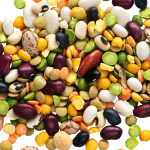Mindfulness has been around for thousands of years. It centers around Buddhism, which uses this concept as the first step to enlightenment, meaning to live intentionally, and applies to living in the moment.

The fear of missing out (FOMO) creates endless distraction and urgency, and practicing mindfulness offers a welcome reprieve to fully engage with the present moment and find contentment within it.
We are a society of multi-taskers juggling many balls at any given moment. Our days are filled with grab-and-go breakfasts as we rush out the door, lunches on the run because we work through our lunch hours and fast food for dinner because of long workdays or rushed schedules.
Mindful eating has gained more popularity since Health Canada introduced their new Food Guide in 2019. The shift from what we eat to focusing on why, when, where, and how we eat has fueled more attention to eating with purpose.
Aspects of Mindful Eating
Mindful eating doesn’t count how many calories, grams of fat, sugar, or carbs food contains. Unlike diets where there are rules to follow to obtain an end goal, mindful eating is about the journey and experience.
The core aspects of mindful eating include:
- Being present in the experience of having a meal. Minimize distractions like cell phones, television, and books. The focus must be on the meal rather than the news or mindlessly scrolling through social media.
- Being aware of your body’s response. Pay attention to signals and cues. Hunger and fullness are signals. Environmental cues like the sight of food or the time of day can prompt mindless eating.
- Savouring your food. Take small bites, chew thoroughly, and eat slowly to engage all your senses through taste, texture, colour, smell, and flavours.
- Leaving judgement aside. Don’t be so hard on yourself about what you eat or how much you eat. It is about being in the moment, acceptance and letting go of self-criticism.
- Practicing gratitude. Acknowledge not only the food but the people who grew the food, as well as the people who may be at the table.
According to Jon Kabat-Zinn, a professor at the University of Massachusetts Medical School and one of the pioneers of modern mindfulness, mindfulness is “paying attention in a particular way, on purpose, in the present moment, and nonjudgmentally.”
Benefits of Mindful Eating

Integrating a mindful eating practice into your life can add physical, emotional and psychological benefits to your well-being.
Mindful eating encourages a healthier relationship with food. Acceptance and non judgement create a more positive attitude towards food leading to decreased feelings of guilt and shame associated with what and how much you eat. This can lead to improved food choices and increased enjoyment of the meal.
Eating slowly and paying attention to your hunger signals improves satiety. Recognizing when you are full helps prevent overeating.
Eating slowly also improves digestion. When you take your time to eat slowly and focus on your meal, stress is reduced and allows your body to rest and digest. Chewing your food thoroughly also contributes to improved gastrointestinal health.
Mindful eating can identify patterns of emotional or stress eating. Understanding the root causes can help determine proper strategies for dealing with emotions/stress.
Studies have shown that mindful eating can impact weight management by influencing eating behaviours and choices. As you pay attention to the physical cues your body gives you, you will recognize when you are full. This can help stop overeating.
Challenges

The practice of mindful eating can also be challenging. It takes patience and time to cultivate the practice.
The following are some factors that you may encounter on your journey:
- Time Constraints – Full schedules can impact our eating habits. Rushed meals or eating on the run put the focus outside the meal and can lead to poor food choices.
- Visual Cues – Food advertising, the increase of food shows, the chocolate bar on the counter, visual triggers can make us crave and reach without thinking.
- Emotional or stress eating – Using food to cope with emotions affects mindful eating. Food is being used to deal with grief, boredom, and loneliness and can lead to binge eating.
- Distractions – Cell phones, social media, and working through lunch due to deadlines and meetings detract from being present during the meal. Diet and fast-food culture have created a toxic relationship with food and our meals, making it easy to eat on the run or eat with guilt.
- Eating Outside the Home – We have all mindlessly wolfed down a bag of popcorn or hotdog at a baseball game, theatre, or amusement park, at these events and not because we were hungry.
- Social influences – When we are in a group situation, whether with family, friends, or colleagues, we may make choices that don’t always support our mindful eating habits.
Creating a Mindful Meal

The mindful meal cycle is about being in the moment and moving out of autopilot mode when eating. Think about the process in the same way a baby looks at food for the first time. When a baby eats a new food, they hold it in their hands, look at it, taste it, then look at it again.
Begin with intention. You are present in the moment and using your senses to connect with food.
The act of mindful eating includes the environment. Set the table, dim the lights, light a candle, and remove all distractions. Yes, this means shutting the television off, closing your book, and putting your cell phone somewhere else.
Now, sit down, close your eyes, and take a deep breath. Open your eyes and look at the food in front of you. What does it look like? Does it make your mouth water? Think about where the food came from.
Next, bring the food to your nose. What does it smell like? Is it sweet? Spicy?
Take a bite. Chew slowly. What flavours come to life in your mouth? Do they change as you chew? What is the texture of the food?
Swallow. Take another bite. Be aware of bodily cues for satiety. Are you full? Are you content?
It takes time and patience, but with consistent practice, you can make mindful eating part of every meal.
Adding Mindful Eating to your Daily Routine

Here are some ideas on how to include mindfulness in your day-to-day life.
- Meal Planning and Preparation:
- Incorporate mindfulness into meal choices and cooking. Menu planning and food preparation enable healthier choices when planning a meal or snack.
- Cook with intention and love.
- Plant a garden. Mindfulness can begin as you grow and tend the plants you will eat.
- Schedule meals:
- Add a lunch hour to your calendar and move away from your desk and distractions.
- Create a calm environment for your meals instead of eating on the go.
- Eating Out Socially:
- Plan and know the menu.
- Eat something before the outing to control hunger.
- Focus on the social aspect of eating and have conversations instead of eating mindlessly.
- Family Meals:
- Encourage mindful eating habits during family meals.
- Slow down and discuss your day.
- Put your fork down in between bites and enjoy each mouthful. Take each bite with intention.
- Keeping a Food Journal
- A food journal allows you to track what you eat, document how you are feeling, describe your energy levels, and note your overall satiety. It is an excellent tool for mindfulness.
- Mindful Eating Apps
- Apps are a convenient and easy way to practice mindful eating. There are accountability features to keep you motivated. Some are equipped with guided meditations and lessons to help develop healthier eating habits, as well as educational content and meal tracking. Many of these apps connect to other devices like smartwatches and fitness trackers, enabling you to monitor all your health information.
By embracing mindful eating, we can transform our meals into moments of intentional enjoyment and improve our relationship with food both physically and emotionally.
Mindful eating is one component of mindfulness. If you want to learn more about how to bring mindfulness into your life, visit local yoga studios and meditation clinics. Provincial health websites are also a great tool for looking for free workshops and resources.
~ Read more from The Health Insider ~
- The Affordable Superfood Canadians OverlookPacked with protein, fibre and key nutrients, beans are a budget-friendly way to boost health and support local farmers.
- Ozempic, Wegovy and Mounjaro Are Changing Our Food ChoicesAppetite-suppressing GLP-1 medications may be changing the way Canadians eat – Smaller appetites and healthier choices are impacting restaurants and the food supply sector in significant ways.
- Eat Your Way to a Healthier Heart with a Metabolic CoachFrom balancing blood sugar to reducing inflammation, Certified Metabolic Coaches help you use food as medicine for your heart and overall wellbeing.
- Fuel Your Mind: Low-Effort Healthy Eating for StudentsNo time to cook? Here’s how students can fuel focus and energy with quick, budget-friendly, no-cook meals.
- Unlock Garlic’s Superpowers With One Simple TrickGarlic is more than flavour—it’s medicine. Learn the simple prep trick that unlocks its full health benefits, from heart to brain to immune support.
- Do This Simple At-Home Mushroom Trick To Boost Your Vitamin DTanning your mushrooms can add over 1,000 IU of vitamin D in just 30 minutes. That’s the same as most supplements deliver in one pill.
The information provided on TheHealthInsider.ca is for educational purposes only and does not substitute for professional medical advice. TheHealthInsider.ca advises consulting a medical professional or healthcare provider when seeking medical advice, diagnoses, or treatment. To read about our editorial review process click here.
















